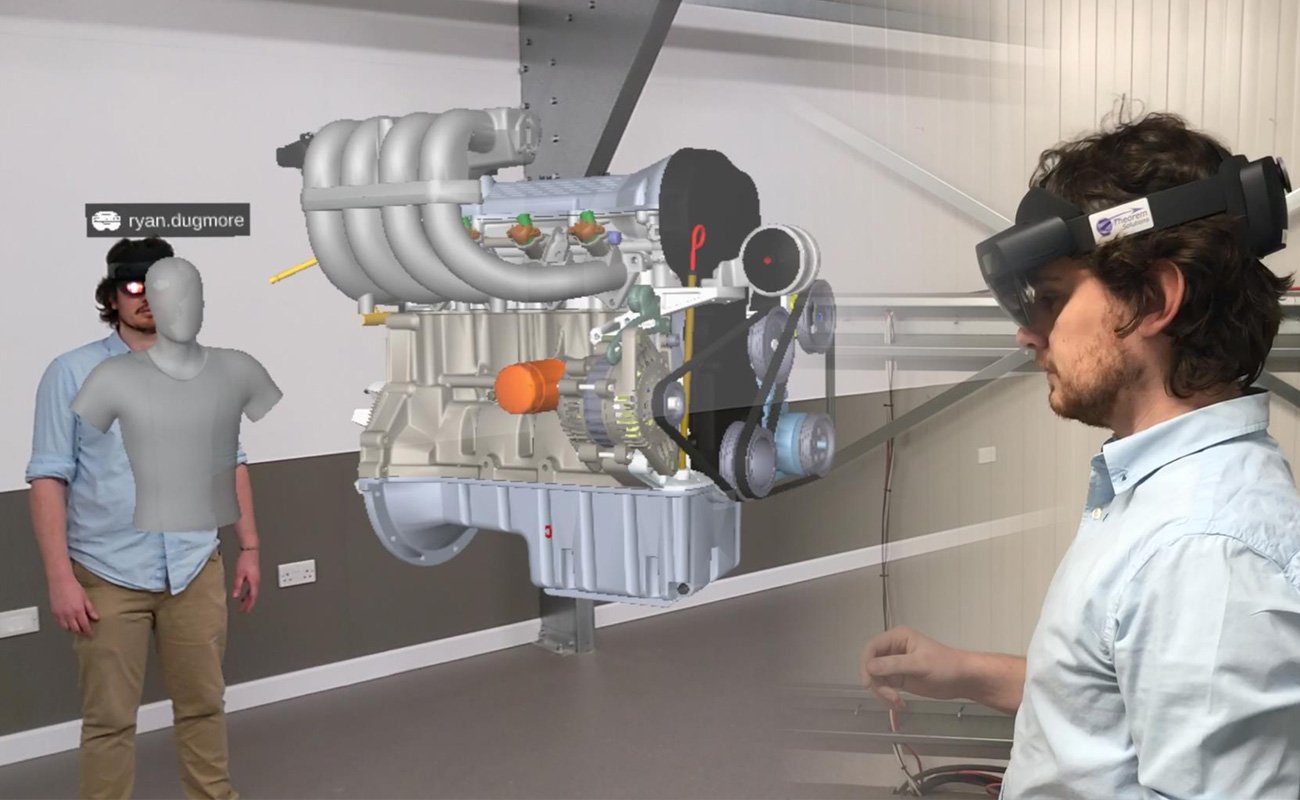Every release of Theorem-XR is packed with innovative new features and enhancements that are offering users the opportunity to extend their capabilities when it comes to optimizing, visualizing and collaborating with their engineering and design data in XR.
And the Q1 2022 release is no exception! So what’s included in our first release of the year?
- Full collaboration for Microsoft Azure Remote Rendering (ARR) users
- Support for AEC systems
- Offline licensing
- Project management updates to the Visualization Pipeline
Fully collaborative ARR
Building on our continuing support for Microsoft’s Azure Remote Rendering (ARR), this release enables other device users (such as HTC Vive, Oculus Rift, Oculus Quest, or Android and IOS devices) to access the same large datasets as HoloLens 2 users as full collaboration is now supported in ARR, and can be used across our range of applications.
Support for AEC systems
Theorem-XR already supports a long list of native 3D data formats such as CATIA V5, 3DEXPERIENCE, NX and Creo, Scanned data, ISO/ANSI standard data like STEP and JT, lightweight visualization formats such as 3D XML and Creo View, and neutral formats such as FBX and glTF.
The Q1 2022 release adds support for several AEC systems, including REVIT, IFC and Navisworks, meaning that it’s easier for those designing large scale factory layouts or construction projects to be able to navigate and review their data at full scale and in context.
Optimising and visualizing Revit data in Mixed and Virtual Reality
See a full list of supported formats
Offline licencing
Previously, Theorem-XR use case based experiences for Visualization, Design Review, Factory Layout and Training would require wifi access to run. But there are situations where people want to take data to a location that doesn’t have network access. In this release, users can now view these datasets away from their network by caching the licence- taking a licence from their server for a period of time (a fixed duration of 7 days from check out) and tying it to their Augmented Reality (AR), Mixed Reality (MR) or Virtual Reality (VR) device to continue to use their experiences anywhere. This is referred to as ‘license borrowing’ or ‘offline licencing’.
License borrowing using the Offline Licensing feature
Visualization Pipeline enhancements
The Visualization Pipeline enables users to take source 3D data and create 3D content in a fully automated process for use in XR experiences. The pipeline automatically tessellates the data and prepares it for XR. As well as processing (part files) geometry it retains product structure and metadata, including animation data, to further enrich the value of XR content.
Enhancements to the Visualization Pipeline in this release are to aid the user experience and improve project management.
Search functionality has been included on the server homepage. This now allows a user to search for pages required and find what they are looking for.
Users also now have the ability to archive or disable projects, and to only see projects that are relevant to them. This has become more of a requirement as more customers have bigger licence pools.
Using the new search bar and project management features
Theorem-XR
Theorem-XR enables you to visualize your 3D CAD and PLM assets in context and at full scale, using Augmented, Mixed and Virtual Reality technologies on the device of your choice. Theorem-XR is data and device neutral, and offers a range of use case based experiences, so offers something for everyone at all stages of their XR journey.
Theorem-XR’s ‘standard’ engineering-based use case experiences work collaboratively, enabling remote teams and home-based staff to join and work in an immersive multi-user environment. Even desktop users can join a collaborative session.
For many, getting 3D data into XR is the biggest stumbling block on the road to adoption. With Theorem-XR, the experiences are underpinned by the Visualization Pipeline which provides a fully automated process that takes 3D data assets directly into Theorem-XR, or for the creation of Unity or Unreal assets for use in internally developed XR solutions.
There are many benefits to bringing the latest XR technologies into existing workflows- reduce costs, improve product quality and support the faster development of products and manufacturing processes across the enterprise. By using Theorem-XR to undertake everyday engineering tasks, it allows you to visualize your 3D CAD data at full scale and in context (the way it should be!), rather than from the confines of a 2D computer screen, bridging the gap between the digital and the physical.
For more information visit our Extended Reality page.




